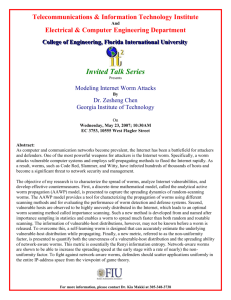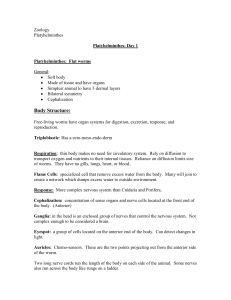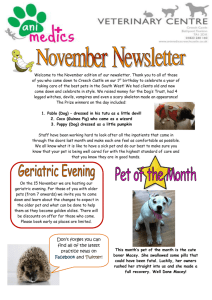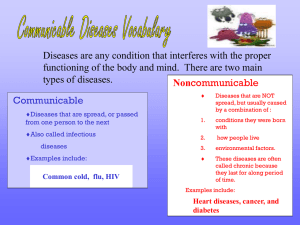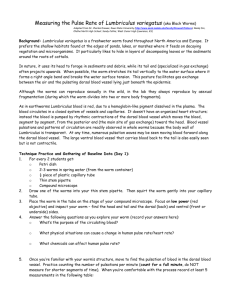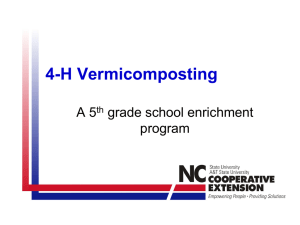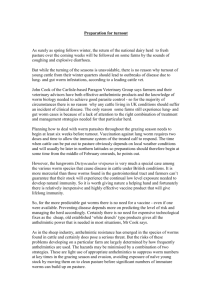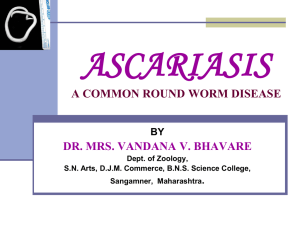Herbal Worm Treatments in Dominica
advertisement
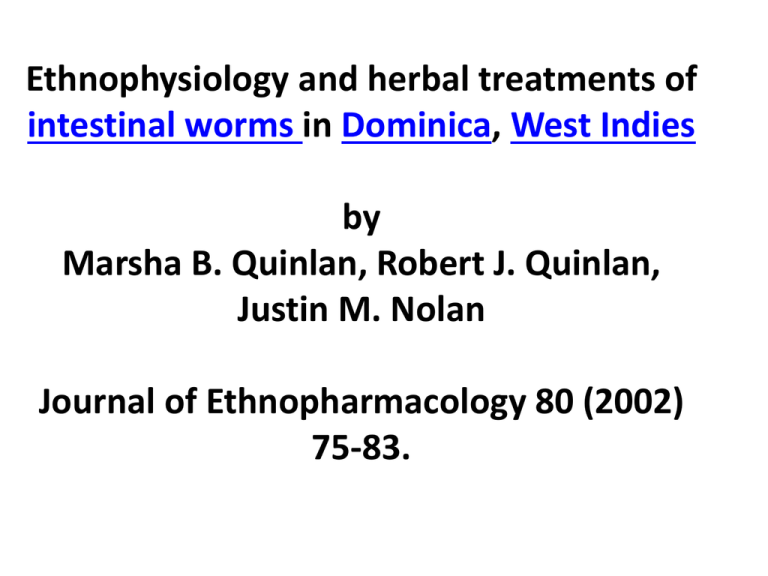
Ethnophysiology and herbal treatments of intestinal worms in Dominica, West Indies by Marsha B. Quinlan, Robert J. Quinlan, Justin M. Nolan Journal of Ethnopharmacology 80 (2002) 75-83. They combine : 1. emic (view based on native knowledge) and 2. etic (scientifically grounded categories of an observer) approaches 3. to investigate local conceptions and botanical treatments of intestinal worms among rural Caribbean villagers. The study site 1. The Commonwealth of Dominica is a small, rural island nation 2. Most Dominicans are bilingual in Creole-English and French-Patois 3. The village is an agricultural community with a population of about 650. 4. The nearest pharmacy is 2 hours away. 5. A doctor is at the government health center, 45 mins. drive from the village. Ethnophysiology of worms 1. Rural Dominicans describe the human body as having a ‘worm bag’, an organ specifically for worms. 2. Infants are born with empty worm bags. a. Infants acquire worms by ingesting invisible worm eggs when they suck and chew on their dirty hands or other dirty objects. b. By the time a baby is a year old, worm eggs have hatched in his worm bag. 3. From a Dominican viewpoint, all humans should have some intestinal worms. 4. Worms function in the digestive process a) to refine food, turning it into rich blood, b) much the way that earthworms convert composting material to rich soil. 5. Most locals, however, assert that worms are dangerous if they grow or multiply beyond the capacity of their worm bag. Methods 1. The free-list interview was conducted. a. Respondents list all the names of plants that are used for treating intestinal worms. 2. Next, respondents were asked to describe a. which part of the plant is used, b. how each plant is prepared, c. the appropriate dosage, and d. the relative efficacy of the treatment. Table 1 Plants mentioned as worm treatments Patois name Species name Sime kontwa Twef Set vil Kupiye´ Lapsent C. ambrosioides A. trilobata A. hispida P. oleracea A. absinthium Times mentioned 30 27 22 18 12 Sime kontwa´ 1. Every informant included it in his or her free-list. 2. Villagers drink a ‘bush tea’ of sime kontwa´ fairly regularly. 3. Oil of chenopodium is distilled from C. ambrosioides, and used against tapeworms, roundworms, and hookworms. 4. The active component is terpene ascaridole. Set vil 1. Set vil is the third most salient worm medicine. 2. Villagers steep the leaves and inflorescence to make a ‘bush tea’. 3. They drink this infusion once a day for 24 days or until they no longer see worms in their feces. 4. This species tested positive for alkaloids but little is known of its chemical properties. Recommendations: 1. First, investigators should identify illnesses of community concern. 2. Then, free-lists can be used to find salient medicinals. 3. In this study, the five most salient worm treatments all have chemical properties that may make them effective vermifuges. They found no references to possible chemical antihelmintics in the third most salient plant, A. hispida. These lesser-studied treatments merit scientific consideration as vermifuges.


